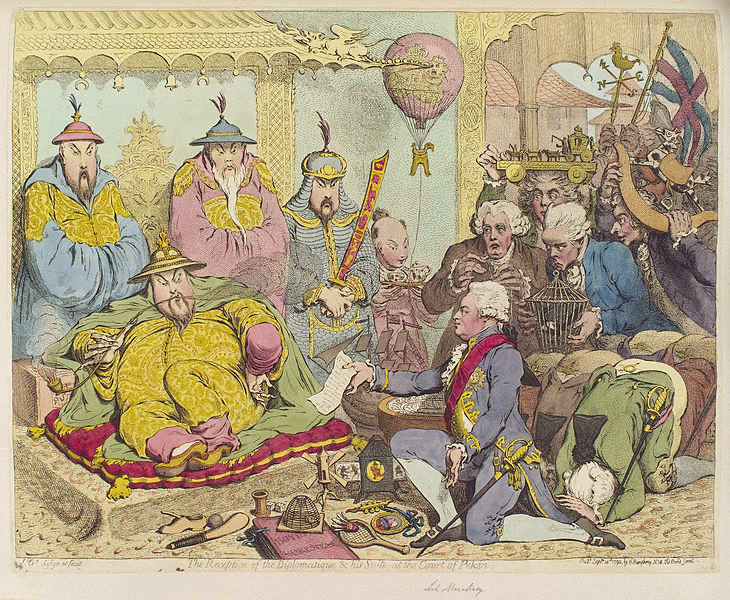When Supply Chain Partners Move Up the Value Chain
This is one of our free-to-access content pieces. To gain access to all Ideas for Leaders content please Log In Here or if you are not already a Subscriber then Subscribe Here.

The role of suppliers in global supply chains has been evolving from simply providing components to manufacturing entire products. Especially for suppliers in emerging economies, however, successfully moving up the value chain requires internal skills and capabilities as well as the willingness of the client to share not only technology but customer-facing capabilities as well.
Outsourcing is no longer just an operational issue. As globalization takes hold and more companies shift more activities to suppliers in emerging economies, outsourcing is now a strategic concern. Slowly, a question began to emerge in the consciousness of major manufacturers: were suppliers learning too much? In other words, was it possible that by ‘learning by supplying’, suppliers would soon have the technological and marketing know-how to compete directly with their former clients? This threat seemed to become more real with the publicized efforts of PC-assembler Acer, who began marketing its own branded products after building both the technological knowhow and the established channels and logistics capabilities required for distribution.
Through an in-depth examination of a particular industry — the manufacture of handsets for mobile phones — Juan Alcacer of Harvard Business School and Joanne Oxley of the University of Toronto’s Rotman School of Management sought to determine whether original equipment manufacturer (OEM) suppliers had a real chance of moving up the value chain — and what it would take to do so. In short: Is it possible to “learn by supplying”? The research was based on extensive data about all of the supply relationships involved in the design and manufacturing of handsets during the entire history of the mobile telecommunications industry. This information from this data was combined with information on the handset-related patenting activities between 1995 to 2010 of OEM suppliers and their customers.
The results of their study indicate that the answer to this question of learning by supplying is far from simple, and depends in great part on what the suppliers are trying to learn and who the suppliers are learning from — i.e., what type of client the suppliers are partnering with.
To successfully launch a brand requires the technological know-how and capabilities to produce the product as well as the branding, marketing and distribution know-how and capabilities to sell the product. Long-term suppliers have found client firms willing and able to share the technology — as evidenced by the increased patenting activities of OEM suppliers as they acquire manufacturing and design experience through their relationship. According to the research by Alcacer and Oxley, however, they have been less successful in acquiring the marketing, distribution and other customer-facing skills they need to sell their own branded products. Few suppliers have been able to gain significant market share with their own brands; even the poster-company of value chain mobility, Acer, still makes most of its money from OEM activities.
The evidence shows, according to the researchers, that branded manufacturers in particular have been successful in preventing OEM manufacturers from becoming competitors, often as a result of increasingly tightly written outsourcing agreements. That said, OEM suppliers have found some success, Alcacer and Oxley show, when they partner directly with mobile operators as opposed to branded producers. The trade-off is that operators offer little technological learning, even when they outsource the design of the handsets.
The results of the research by Alcacer and Oxley have implications for both OEM suppliers and branded manufacturers.
For OEM suppliers, the lesson is that strategic considerations need to be included from the beginning in the choice of a partner. If you have the ambition of creating your own competitive products in the future, it is better to work with operators. Working with branded producers, especially leading producers with market clout, will probably lock you into a subordinated position. And producers have shown to be serious about the non-compete terms of their contracts (one OEM supplier who had designed and manufactured millions of handsets for Motorola lost its contract as soon as it began selling handsets under its own brand in China).
For leading brand producers, the lessons are two-fold. First, the research shows that stringent outsourcing agreements have had an impact on the own-branding attempts. Even without these agreements, however, the general fear that OEM suppliers are quietly acquiring the skills to suddenly become dangerous competitors is overblown. Many suppliers do attempt to introduce their own branded products at some point, but the sales of these products have not been significant.
In the general context of supplier-client relationships, the results of the research are at once reassuring — suppliers do not evolve into major competitive threats — but also less optimistic: The rosy picture of suppliers and clients partnering for the benefit of all is tempered by the underlying suspicion in the relationship, evident in many cases from the strict outsourcing agreements.
Learning by Supplying. Juan Alcacer & Joanne Oxley. Strategic Management (June 2013).

Ideas for Leaders is a free-to-access site. If you enjoy our content and find it valuable, please consider subscribing to our Developing Leaders Quarterly publication, this presents academic, business and consultant perspectives on leadership issues in a beautifully produced, small volume delivered to your desk four times a year.

For the less than the price of a coffee a week you can read over 650 summaries of research that cost universities over $1 billion to produce.
Use our Ideas to:
Speak to us on how else you can leverage this content to benefit your organization. info@ideasforleaders.com